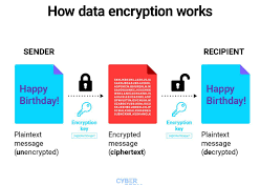What is our incident response plan, and how frequently is it tested and updated? How quickly can we detect and respond to cybersecurity incidents?
Cybercriminals commonly use several techniques to execute phishing attacks. One prevalent method is email spoofing, where attackers disguise emails to appear as if they come from a trusted source, tricking recipients into divulging sensitive information. Another technique is spear phishing, targetinRead more
Cybercriminals commonly use several techniques to execute phishing attacks. One prevalent method is email spoofing, where attackers disguise emails to appear as if they come from a trusted source, tricking recipients into divulging sensitive information. Another technique is spear phishing, targeting specific individuals with personalized messages, increasing the likelihood of success. Cybercriminals also employ smishing (SMS phishing) and vishing (voice phishing), using text messages and phone calls to deceive victims. Clone phishing involves creating near-identical copies of legitimate emails, making it difficult for users to distinguish between real and fake messages.
To prevent falling victim to these tactics, individuals and organizations can adopt several effective measures. Firstly, implementing multi-factor authentication (MFA) adds an extra layer of security, requiring additional verification beyond just passwords. Secondly, educating users on recognizing phishing attempts, such as checking email addresses and looking for suspicious links, can significantly reduce the risk. Utilizing advanced email filtering solutions can help identify and block phishing emails before they reach inboxes. Regularly updating software and systems ensures protection against known vulnerabilities that attackers might exploit. Finally, encouraging a culture of skepticism and verification, where users double-check unexpected requests for information, can act as a robust defense against phishing attacks.
See less

An incident response plan (IRP) is a structured approach outlining how our organization prepares for, detects, and responds to cybersecurity incidents. It includes specific steps for identifying, managing, and mitigating the effects of security breaches, ensuring minimal damage and quick recovery. KRead more
An incident response plan (IRP) is a structured approach outlining how our organization prepares for, detects, and responds to cybersecurity incidents. It includes specific steps for identifying, managing, and mitigating the effects of security breaches, ensuring minimal damage and quick recovery. Key components include preparation, detection, analysis, containment, eradication, recovery, and post-incident review.
Our IRP is tested and updated regularly to stay effective against evolving threats. Typically, we conduct tabletop exercises and simulations quarterly to evaluate our readiness and identify areas for improvement. This frequent testing ensures that our response team remains sharp and that our procedures are up-to-date with the latest security protocols and technologies.
Regarding detection and response times, our goal is to detect cybersecurity incidents as quickly as possible, ideally within minutes to an hour. We employ advanced monitoring tools and real-time alert systems to achieve this rapid detection. Once an incident is detected, our response team mobilizes immediately, following the predefined steps in the IRP. Depending on the severity of the incident, we aim to contain and mitigate the threat within hours to a day, ensuring minimal disruption to our operations and securing our digital assets efficiently.
See less